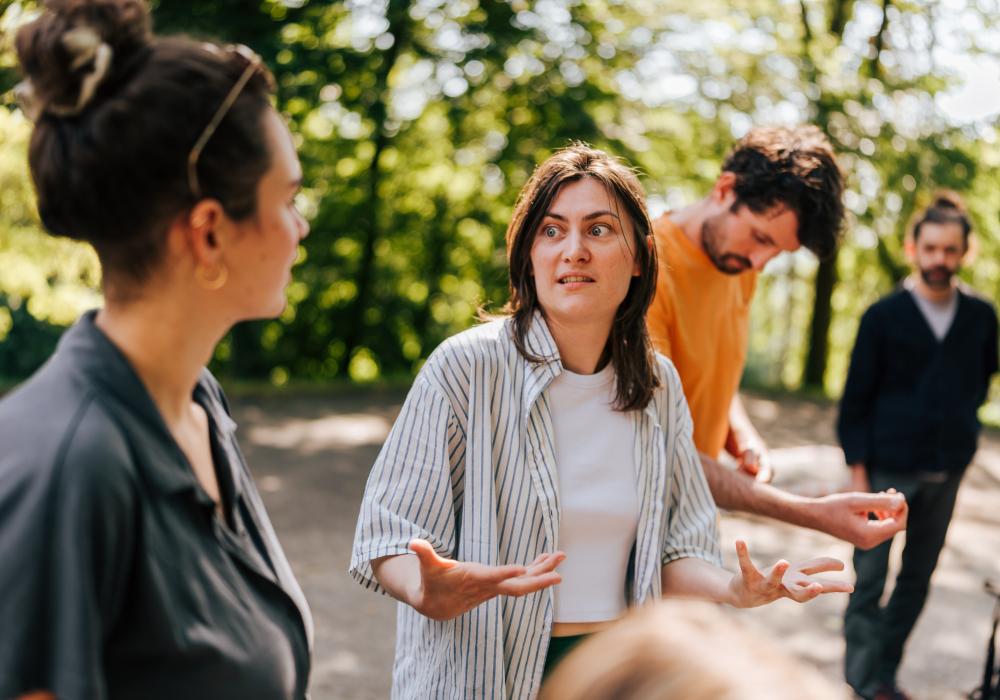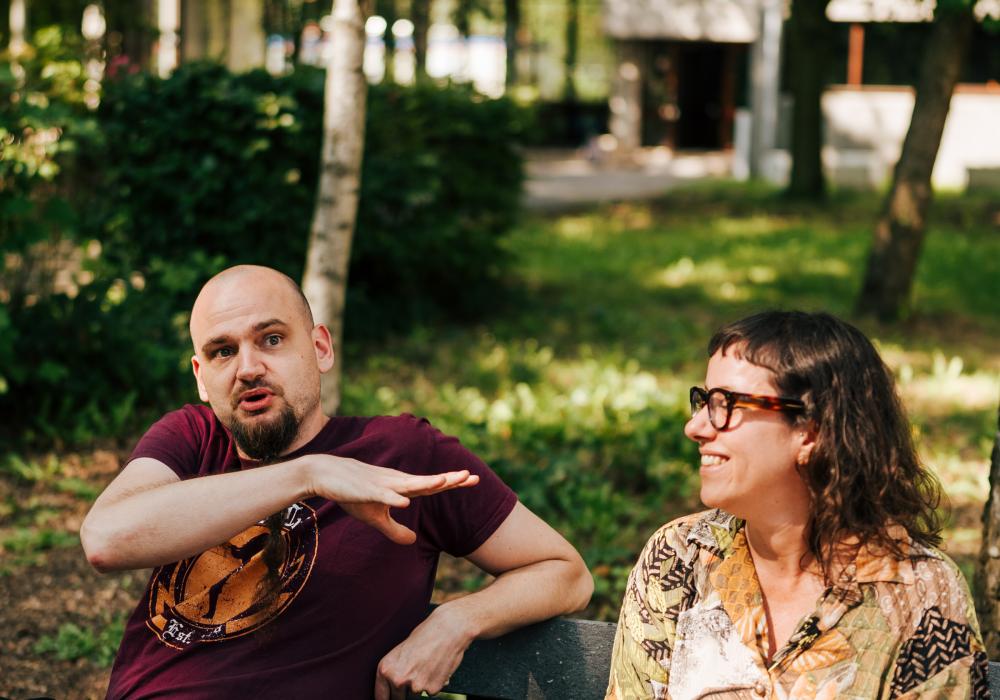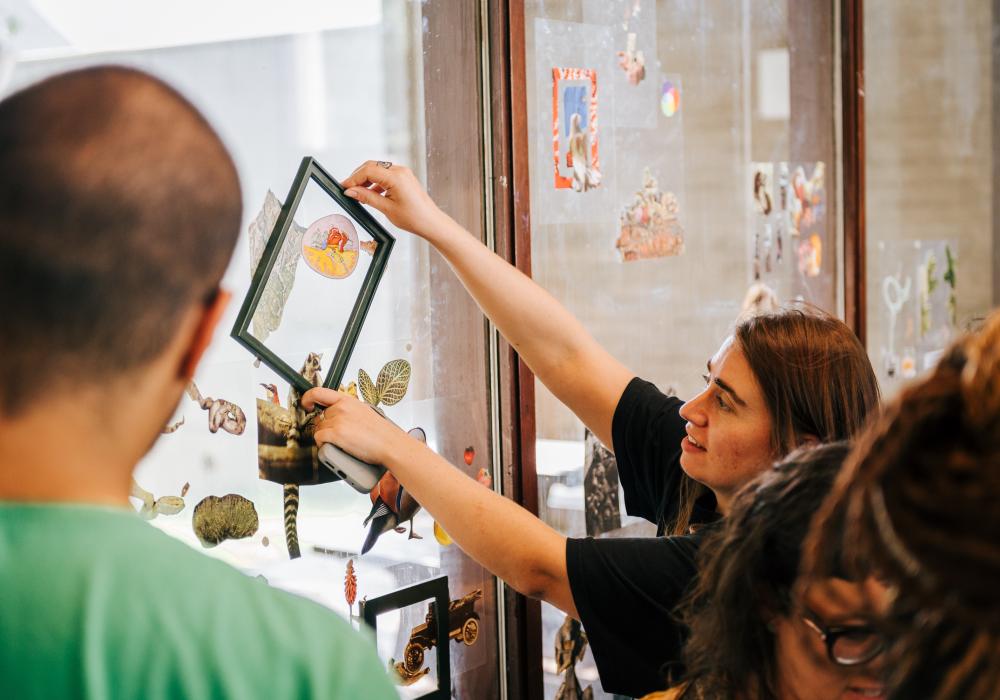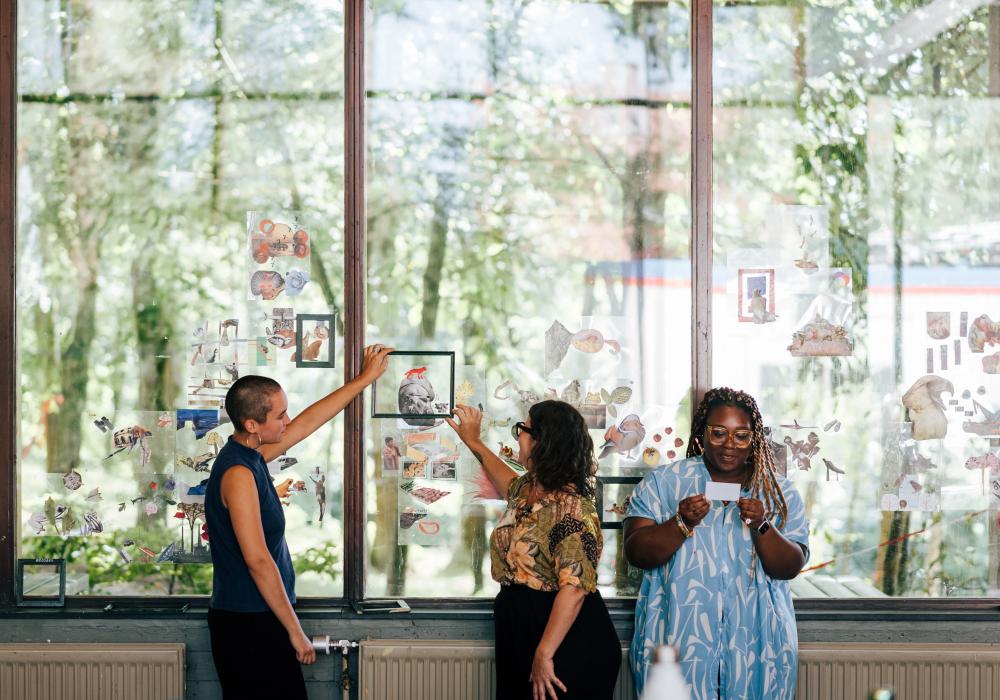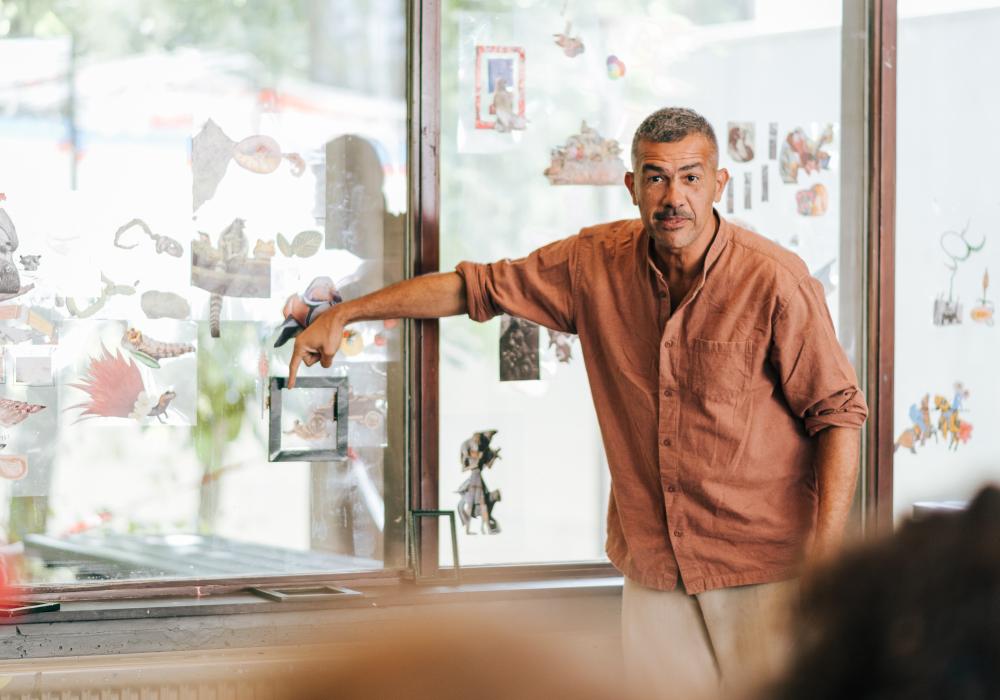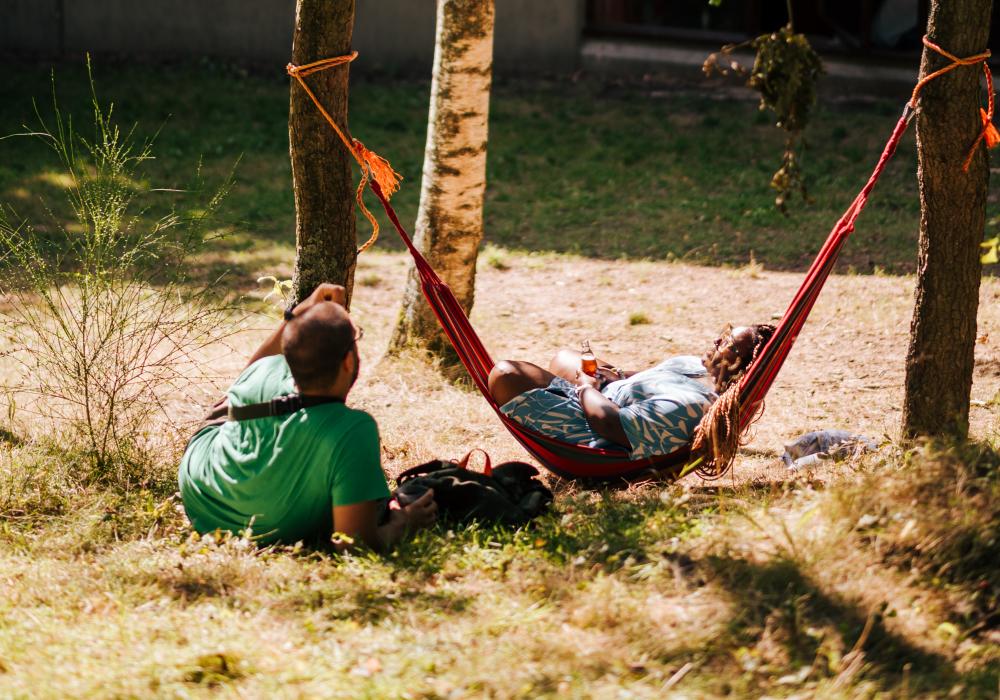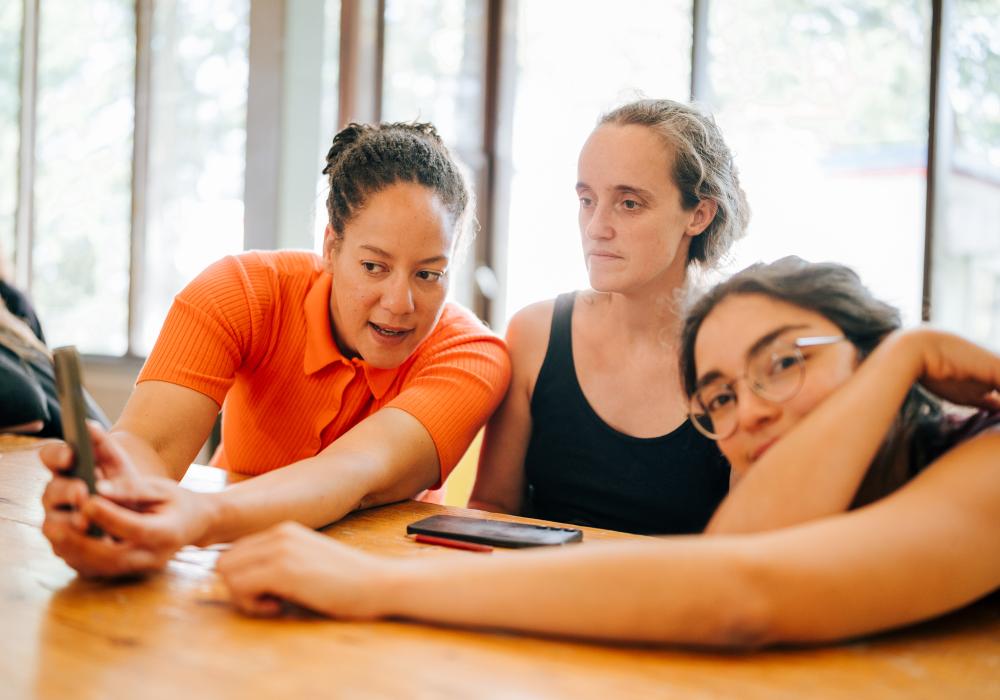Playful climate activism via the arts and youth work
What happens when youth work, arts and climate activism join forces? The answer lies in a unique partnership that goes beyond the traditional boundaries of each of these domains: the project Codename Seedling, A Climate Justice and Arts Educational Approach to Youth Work. On a sunny day in late August, artists, young people and researchers from five different countries joined together. The goal? To develop methodologies that stimulate the imagination and provide the necessary tools to prepare young people for a future full of challenges. The partnership explores how the different disciplines reinforce each other and especially what added value this provides for the young people they work with. That impact is tangible both locally and internationally.
A showcase for European projects
Elvira leads us through the history of the project: ‘This is the third project in a series that started in 2020. We started with a Mobility of youth workers around participation, which also had artists participating. Since then, the collaboration evolved into a Small-Scale Partnership and eventually into a full-fledged partnership, with art taking centre stage. Several disciplines are involved. Music, visual arts as well as performing arts are interwoven throughout the project.’
This is clearly not Elvira’s first project. Their passion for European projects radiates through. ‘I consider myself a billboard for European projects. The impact I felt when I took part in the artistic youth project with 40 young people from Belgium, France, Denmark and Slovenia (Creative Europe) in 2012 still seeps through in my work. I want young people to have the same opportunities.
For example, I put great importance on the sensory experience in any learning process. I also still have close friendships across national borders. Some young people from back then are still partners in current Erasmus+ projects. ’
If we teach young people now to see art as a way to find solutions, we will create the problem-solvers of the future.
Toby and Rone add: ‘Climate justice already surfaced in our previous project, that's when the idea came of exploring this more thoroughly. We established that there was a need to bring art and climate together. We not only want to raise awareness among young people, but also give them the tools to really make an impact.’
The combination of art & climate awareness
The multidisciplinary approach within Codename Seedling is key. That approach has an important role in raising awareness about climate change and the fight against climate anxiety among young people. Rone, who has previously been involved in global education projects, emphasises the difference between formal and non-formal learning:
‘At school, young people learn about climate change, which can be frustrating because they feel that, despite their efforts, nothing is changing. We want to turn that feeling around. Art offers an open way of communication, a source of creative energy that opens up more possibilities than we often realise. It helps young people think out-of-the-box and find solutions that would otherwise remain invisible.’
Toby nods in agreement: ‘We want young people to feel part of the solution, to understand that their voice matters. The conversation about climate change is not only about the problem, but also about how they can play an active role in it.’
Bob agrees: ‘We see art as a communication tool so that young people learn to look at problems from new perspectives. If we teach young people now to see art as a way to find solutions, we will create the problem-solvers of the future.’
Playful activism
While climate change is often associated with fear and despair, the Codename Seedling project actually wants to emphasise that activism can also be playful and creative. Elvira states, ‘It is important that young people do not feel frustrated about the state of the world all the time. We also want to show them that working around climate can be fun. Art provides that opportunity.
The things that are important to them: how can we enhance them? For example, can we interview youth activists and make a comic about their work? Or create a playful dialogue between young people from different countries, making them feel reconnected? With these methodologies, we bring joy back into activism.’
We share everything we do, but always respecting the other's contribution. That way we all ‘benefit’ from each other's expertise.
Participant Leonor (young illustrator and climate activist from Denmark) confirms this based on her own experience: ‘Climate anxiety can make you freeze. But mixing activism with art is just fun. It reminds me that we are still allowed to enjoy life, even when dealing with tough issues like climate change. The project made me realise that art is a way to bring concrete change without falling into hopelessness.’
From technology to empowerment
In addition to the focus on art and climate, the project also pays a lot of attention to technology and sustainability. Benjamin: ‘Technology is a big part of a young person's life. But do young people know how advertisements attract their attention? And do they know the impact of the internet on the environment and climate? By making young people aware of how technology affects them, and offering them alternatives, we hope to help them not to just go along with the system. Our organisation also teaches young people how to reuse electronic waste, for example, in creative projects. This gives them a sense of agency and empowerment.’
Elvira adds: ‘Our attention is our most valuable resource these days. It is constantly being hijacked and traded, especially in the context of technology and social media. However, our attention is powerful. That which we give attention grows. Our methodologies, on the one hand, make room to pay more attention to your immediate environment through your senses and, on the other, show how collective attention can move mountains.’
The process as impact
And what exactly is the added value of such a partnership? There is a unanimous answer: sharing knowledge, methodologies and ideas throughout the partnership. Rone explains: ‘We feel free to use each other's inventions. It is an open process, and that is one of the strengths of our partnership: together we build on what the other person has come up with.’ Marieke adds: ‘In this project, we want everything we create to be open source, so that others can build on it.’ Elvira calls this ‘stealing with care and empathy’. ‘We share everything we do, but always with respect for the other person's contribution. That way we all benefit from each other's expertise.’
When we ask what they hope to achieve with this project, the answers unanimously focus on long-term impact. Bob hopes the project will teach young people to think differently and solve problems creatively. Toby wants young people to play an active role in future decision-making on climate change, while Rone points out that the project helps young people find both scientific and creative solutions.
Elvira concludes, ‘The process itself is already the impact. Bringing young people, artists, youth workers and researchers together creates a strong network of people who inspire each other and explore new paths together. That is what it is ultimately all about.’
This Cooperation Partnership brings together the following people, sectors and countries: Elvira Crois from Vrije Universiteit Brussel (BILD), Rone Fillet from De Veerman (Belgium), Toby Peach from Coney (UK), Marieke Breyne and Bob Lundgreen from Nyskaben (Denmark), Benjamin Efrati from Villette Makerz (France) and Fernanda Eugenio from AND Lab (Portugal). Bath Spa University (UK) and Destelheide (Belgium) are also involved. In short: a colourful mix of artistic disciplines, laced with academic knowledge as well as experience in youth work.
Cooperation Partnership
This project is a Cooperation Partnership. In a project like this, organisations from different countries set up a long-term international cooperation with impact on youth work practice. Curious?
Author: Emma Van Ooteghem
Images: Stijn van der Looij
This article appeared in the 12th edition of SCOOP magazine.
